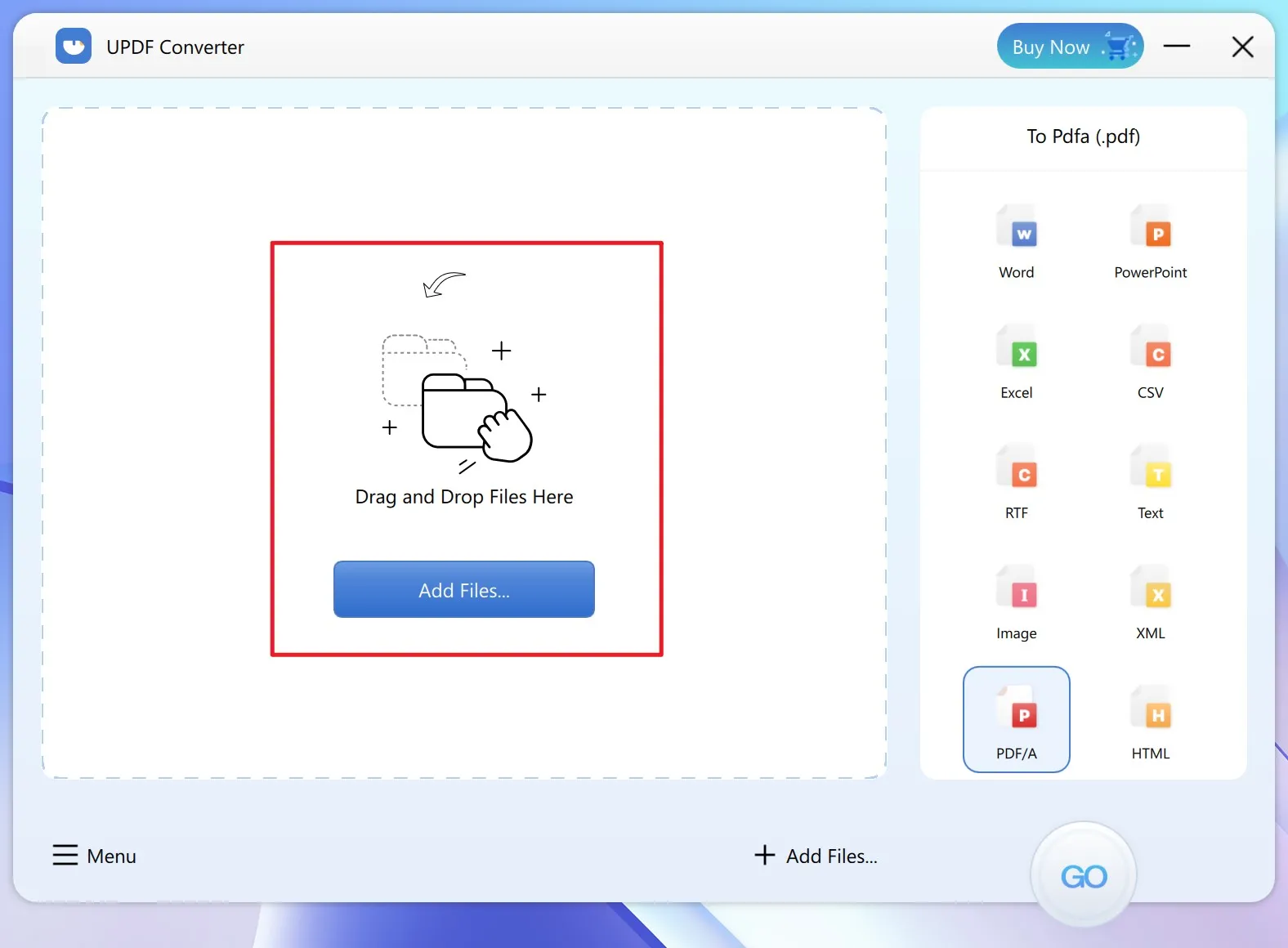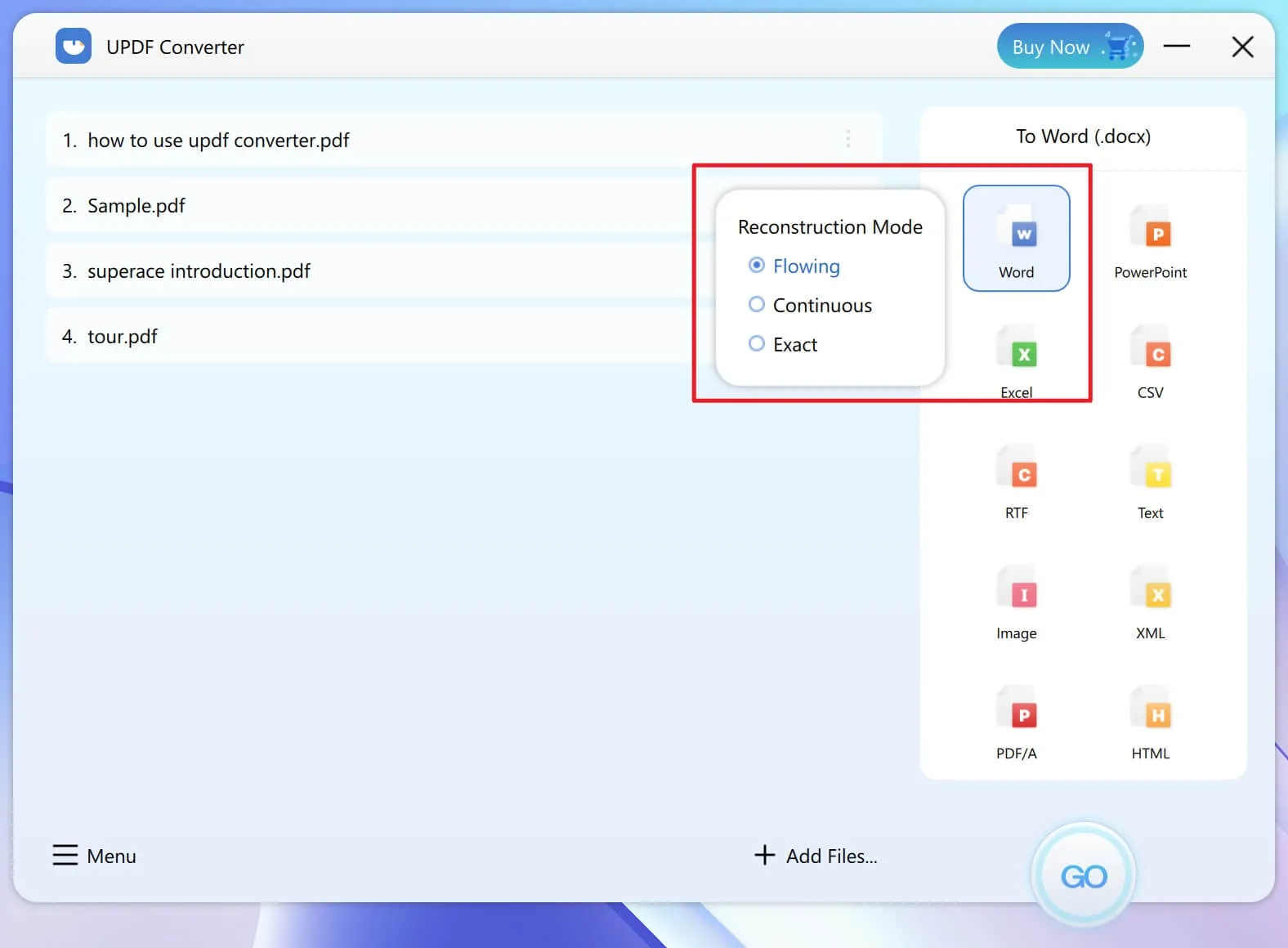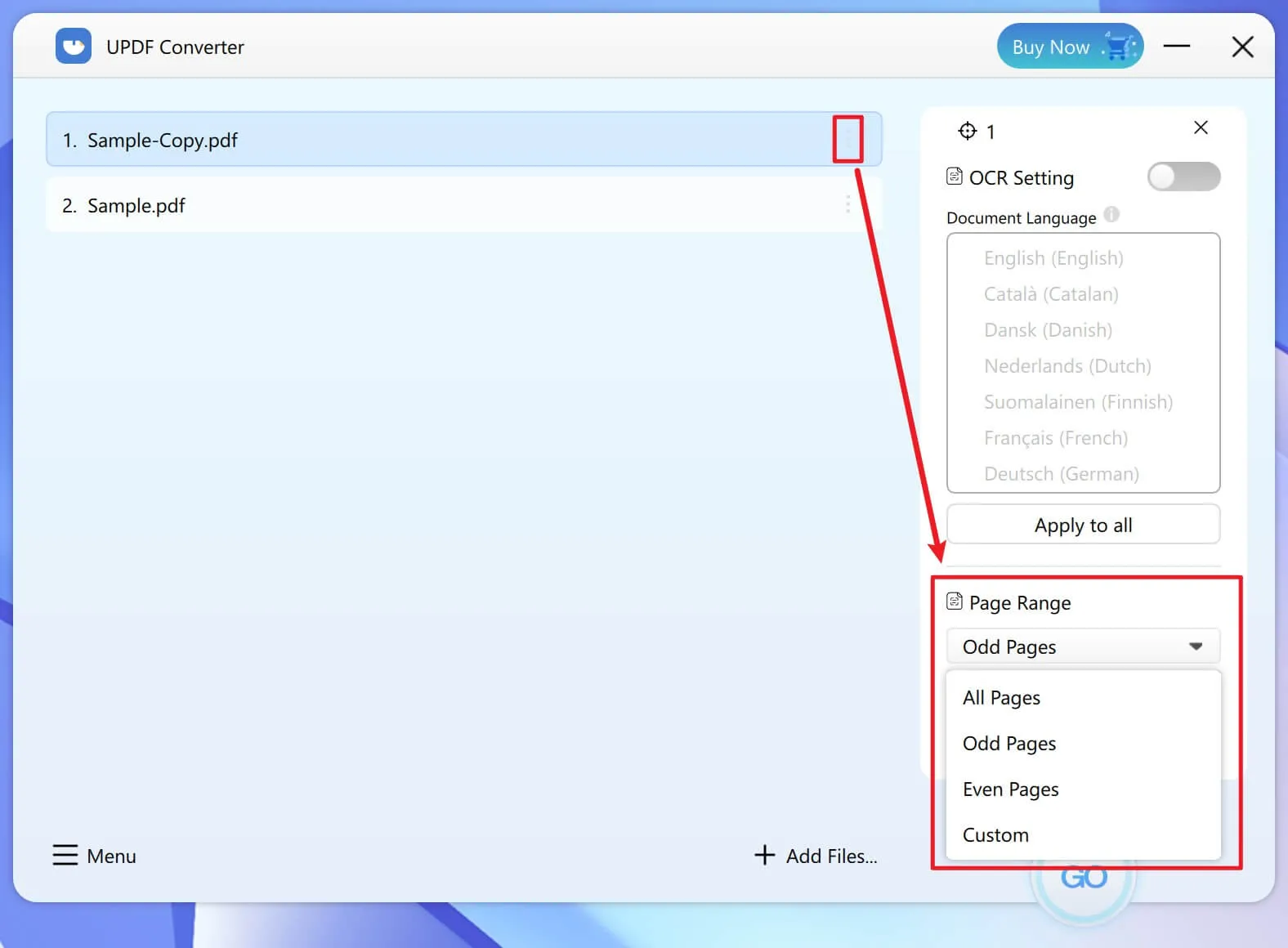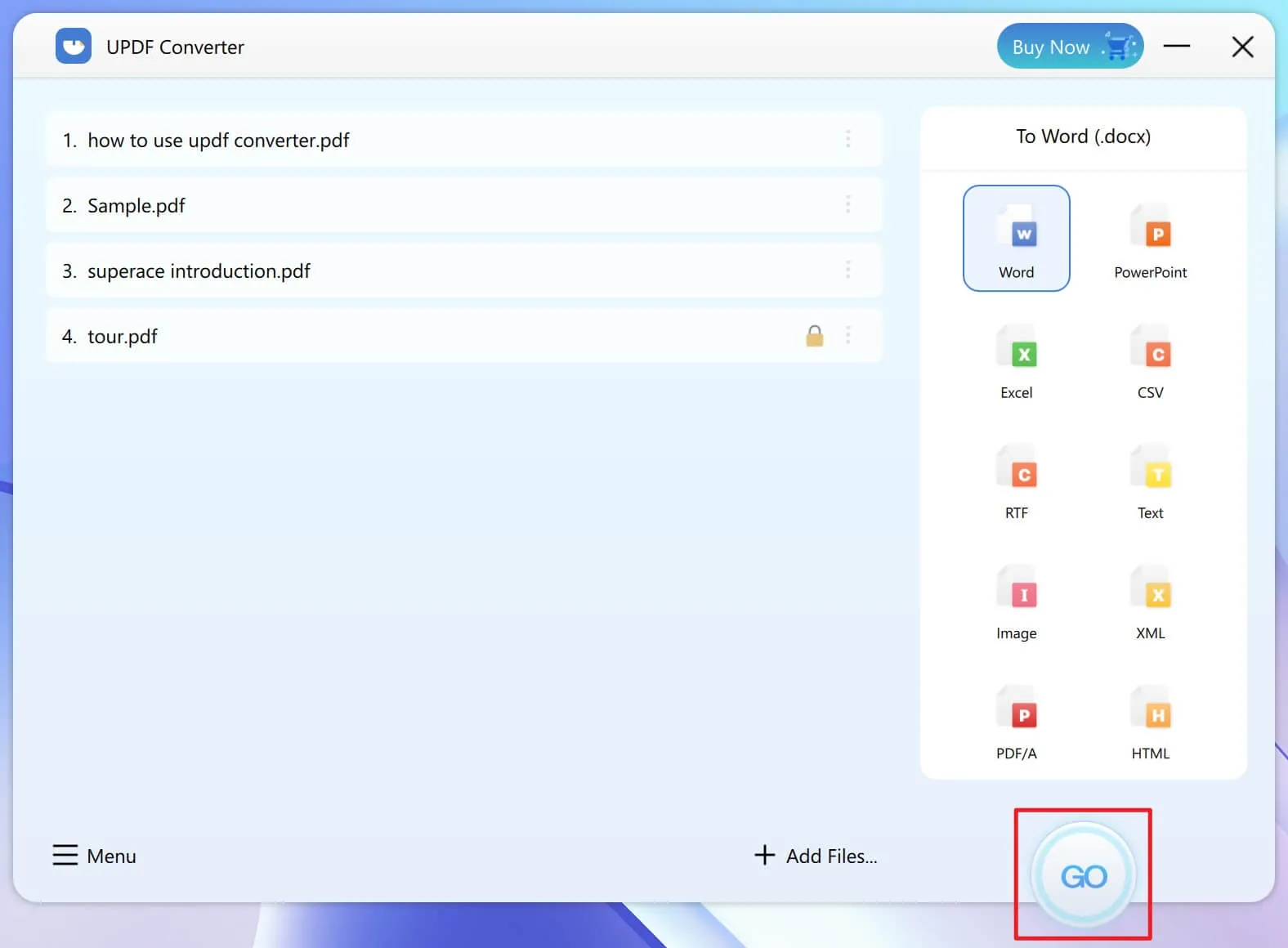Convert PDF to Other Formats
UPDF Converter supports the following conversions:
- PDF to Word
- PDF to Excel
- PDF to PowerPoint
- PDF to CSV
- PDF to Images (JPG, PNG, BMP, TIFF, and GIF)
- PDF to HTML
- PDF to XML
- PDF to Text
- PDF to RTF
- PDF to PDF/A
Step 1. Add Files
Files can be added for conversion by dragging them from your computer and dropping them into the UPDF Converter interface.
Users can also use the "Add Files" button to import files into the conversion queue.

Step 2. Select Output Format
In the formats panel on the right side, click the required format and select one of the options provided. Each format will show different options. For example, clicking Word will reveal three options: Flowing, Continuous, and Exact - pick the one that suits your requirement.
- Flowing. Recovers page layout, columns, formatting, and graphics, and preserves text flow.
- Continuous. Does not retain the exact layout of the document. Correctly reconstructs the text order but will only recover paragraph formatting, graphics, and text flow.
- Exact. Uses Word text boxes to ensure that the text and graphic layout in the Word document is the same as the PDF file. This mode should not be used if you need to make lots of edits to the recovered content. It is most useful for short artistic or brochure-like documents.

If you want to set the page range of the conversion, you need to click the "three vertical dots" settings icon next to each document. In the panel on the right, set the page range for your conversion. You can convert:
- All Pages
- Odd Pages
- Even Pages
- Custom Pages

Note: You don’t need to set the page range if you want to convert all pages as it is the default option.
Step 3. Start Conversion
Click the GO button to initiate the conversion.
The converted files will be saved and the destination folder will be displayed on your screen.

 UPDF
UPDF
 UPDF for Windows
UPDF for Windows UPDF for Mac
UPDF for Mac UPDF for iPhone/iPad
UPDF for iPhone/iPad UPDF for Android
UPDF for Android UPDF AI Online
UPDF AI Online UPDF Sign
UPDF Sign Edit PDF
Edit PDF Annotate PDF
Annotate PDF Create PDF
Create PDF PDF Form
PDF Form Edit links
Edit links Convert PDF
Convert PDF OCR
OCR PDF to Word
PDF to Word PDF to Image
PDF to Image PDF to Excel
PDF to Excel Organize PDF
Organize PDF Merge PDF
Merge PDF Split PDF
Split PDF Crop PDF
Crop PDF Rotate PDF
Rotate PDF Protect PDF
Protect PDF Sign PDF
Sign PDF Redact PDF
Redact PDF Sanitize PDF
Sanitize PDF Remove Security
Remove Security Read PDF
Read PDF UPDF Cloud
UPDF Cloud Compress PDF
Compress PDF Print PDF
Print PDF Batch Process
Batch Process About UPDF AI
About UPDF AI UPDF AI Solutions
UPDF AI Solutions AI User Guide
AI User Guide FAQ about UPDF AI
FAQ about UPDF AI Summarize PDF
Summarize PDF Translate PDF
Translate PDF Chat with PDF
Chat with PDF Chat with AI
Chat with AI Chat with image
Chat with image PDF to Mind Map
PDF to Mind Map Explain PDF
Explain PDF Scholar Research
Scholar Research Paper Search
Paper Search AI Proofreader
AI Proofreader AI Writer
AI Writer AI Homework Helper
AI Homework Helper AI Quiz Generator
AI Quiz Generator AI Math Solver
AI Math Solver PDF to Word
PDF to Word PDF to Excel
PDF to Excel PDF to PowerPoint
PDF to PowerPoint User Guide
User Guide UPDF Tricks
UPDF Tricks FAQs
FAQs UPDF Reviews
UPDF Reviews Download Center
Download Center Blog
Blog Newsroom
Newsroom Tech Spec
Tech Spec Updates
Updates UPDF vs. Adobe Acrobat
UPDF vs. Adobe Acrobat UPDF vs. Foxit
UPDF vs. Foxit UPDF vs. PDF Expert
UPDF vs. PDF Expert